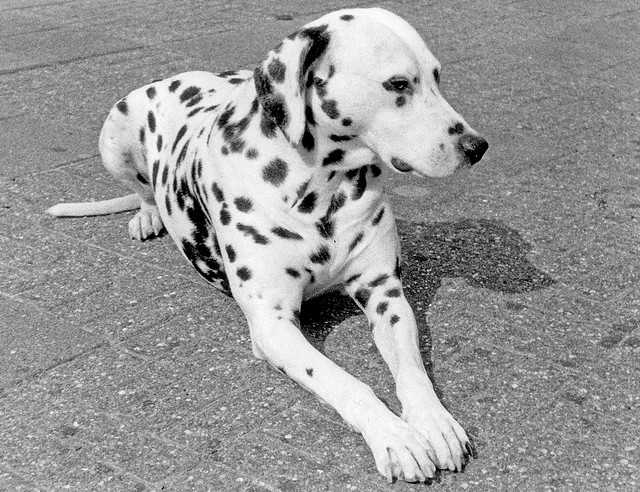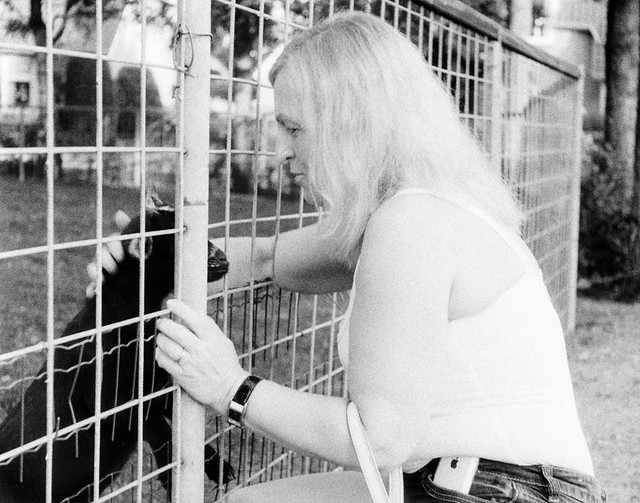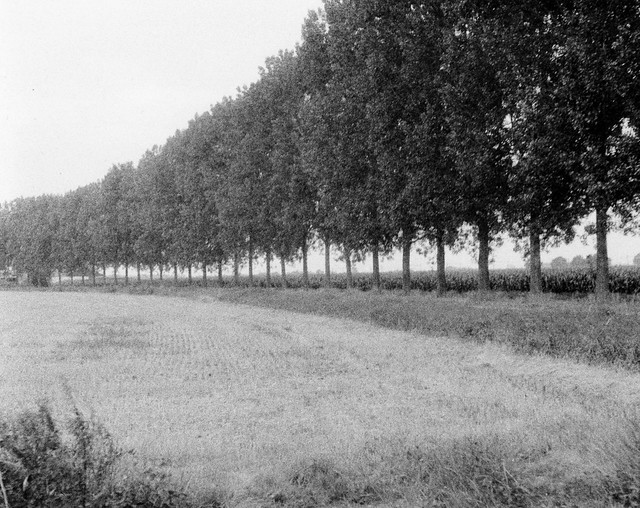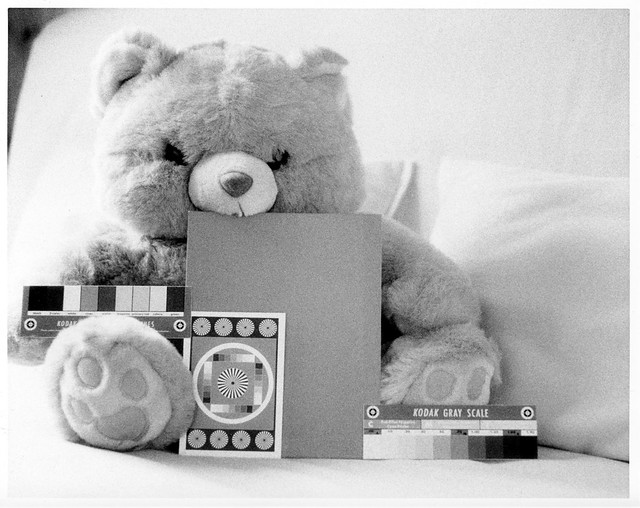Fotohuis
Well-known
So far my holidays allowing a test with the new Foma film: Retropan 320 Soft:


Fotohuis
Well-known

OK, let us try something with that Rollei Supergrain 1+9 developer on E.I. 640.
KenR
Well-known
Hc110
Hc110
HC110 dilution ??? B is certainly most common, but they do not specify which dilution they used.
Hc110
HC110 dilution ??? B is certainly most common, but they do not specify which dilution they used.
Fotohuis
Well-known
No problem to test the film in HC-110 either.
The time is indeed for HC-110 dilution B (1+31), a small mistake from the flyer delivered with the film.
The complete data sheet:
http://foma-cz.cs4.cstech.cz/ew/ec816f17-da8b-49ce-bd89-1d75aa19fee6-en
The time is indeed for HC-110 dilution B (1+31), a small mistake from the flyer delivered with the film.
The complete data sheet:
http://foma-cz.cs4.cstech.cz/ew/ec816f17-da8b-49ce-bd89-1d75aa19fee6-en
Fotohuis
Well-known
A first test strip is hanging to dry. I am already sure that I have to adapt the Supergrain 1+9 developing time a bit longer then the recommended 11 minutes (20C) on the flyer of the film.
I will make a Split Grade test print maybe tomorrow.
I will make a Split Grade test print maybe tomorrow.
ChrisLivsey
Veteran
^
Testing is much appreciated.
I have seen a number of results which have not impressed me but I have no great faith in the testers. Grain and blown highlights have featured but who knows how well they are scanned?
Testing is much appreciated.
I have seen a number of results which have not impressed me but I have no great faith in the testers. Grain and blown highlights have featured but who knows how well they are scanned?
Fotohuis
Well-known
Heiland TAS inverse processor in action:


Fotohuis
Well-known
Just interpolated some data for E.I. 640 and E.I. 320. The given data for Supergrain 1+9 is way off so I have to start the measurements from blanc data.
Here a first result, Zorki-6 and I-50 with Retropan 320 E.I. 320 in Supergrain 1+9, 8:00 minutes (20,0C) and still for zone V 0,54 logD only (should be 0,72 logD). Hence consequences for especially the high lights. Split Grade print on gradation 4,3. (Around 2,5 would be correct).
First impression:
1. This is a real grainy film, even a bit more then Foma Fomapan 400 film.
2. The film is drying absolute flat.
3. Effective film speed around iso 320-400, a push development is possible but not much higher then iso 640-800.
4. There are no markers or index on the film strip. It is completely blanc. This is from a bulk 30,5m/100ft film.
5. This emulsion looks like the in 2001 discontinued Fomapan T800 film. I have to dig up that data from 1997-2001 but at that time I had no densitometer.

Mr. "Stip" which means "Dot" in Dutch language. He is really grainy ....
Retropan 320
Here a first result, Zorki-6 and I-50 with Retropan 320 E.I. 320 in Supergrain 1+9, 8:00 minutes (20,0C) and still for zone V 0,54 logD only (should be 0,72 logD). Hence consequences for especially the high lights. Split Grade print on gradation 4,3. (Around 2,5 would be correct).
First impression:
1. This is a real grainy film, even a bit more then Foma Fomapan 400 film.
2. The film is drying absolute flat.
3. Effective film speed around iso 320-400, a push development is possible but not much higher then iso 640-800.
4. There are no markers or index on the film strip. It is completely blanc. This is from a bulk 30,5m/100ft film.
5. This emulsion looks like the in 2001 discontinued Fomapan T800 film. I have to dig up that data from 1997-2001 but at that time I had no densitometer.

Mr. "Stip" which means "Dot" in Dutch language. He is really grainy ....
Retropan 320
Fotohuis
Well-known
Comment from the Czech factory about their special developer for it:
We recommend to process Retropan 320 Soft films in this Retro Special Developer.
The main advantage is optimization of contrast of the film. The film will provide wide range of tones and soft image in the area of lights.
With best regards
Jana
Jana Křemenáková (Šlechtová)
Export dpt.
FOMA BOHEMIA spol. s r.o.
Fotohuis
Well-known
Next developer: HC-110 dilution B (1+31). Retropan exposed on E.I. 320 again.
A new test strip is hanging to dry. I took 8:30 minutes (20C) because I am printing in Split Grade with a combination of a diffusion box and a condensor enlarging system (Dunco II 67 120 Pro). In optimum preformance the highlights are around 1,25 logD with the densitometer.
Control strip on zone V. Should be around 0,72 logD.
Just for a practical impression of the wet strip: Pretty good now.
Another interesting thing is the very fast Clear time of this film. In a regular Acid type fixer (RXA) 1+4 less then 30 seconds. So the minimum recommended fix time of 3 minutes is possible without any problem.
A new test strip is hanging to dry. I took 8:30 minutes (20C) because I am printing in Split Grade with a combination of a diffusion box and a condensor enlarging system (Dunco II 67 120 Pro). In optimum preformance the highlights are around 1,25 logD with the densitometer.
Control strip on zone V. Should be around 0,72 logD.
Just for a practical impression of the wet strip: Pretty good now.
Another interesting thing is the very fast Clear time of this film. In a regular Acid type fixer (RXA) 1+4 less then 30 seconds. So the minimum recommended fix time of 3 minutes is possible without any problem.
Fotohuis
Well-known
Well I just measured the negatives:
Highlights: 1,05 logD; the Grey card (zone V) 0,62 logD (should be 0,72 logD) so for my enlarger I still can go up for the developing time.
For a quick working type developer HC-110 in 1+31 you can see now this is a really low contrast type film.
Suitable for a good scan now, less suitable for my Dunco II 67 enlarger system.
Pictures will follow later ....
Highlights: 1,05 logD; the Grey card (zone V) 0,62 logD (should be 0,72 logD) so for my enlarger I still can go up for the developing time.
For a quick working type developer HC-110 in 1+31 you can see now this is a really low contrast type film.
Suitable for a good scan now, less suitable for my Dunco II 67 enlarger system.
Pictures will follow later ....
Nokton48
Veteran
A test of 4x5" Foma Retropan Soft here:
https://www.flickr.com/photos/jshillaw/20202203638/
Looks very promising. I wonder when the stocks of 9x12cm will appear?
https://www.flickr.com/photos/jshillaw/20202203638/
Looks very promising. I wonder when the stocks of 9x12cm will appear?
Fotohuis
Well-known

Split Grade print from Retropan 320 Soft E.I. 320 in HC-110 (B) for 8:30 minutes (20C). Zorki-6 with I-50 (F/3,5-50mm). Well insiders know how I get all these nice F.S.U. RF cameras.
In HC-110 it is really a grainy film, from the 50's. Retro style. Well my wife, from Ukraine is also from the 50's .......
Another example in HC-110 (B):

Fotohuis
Well-known
OK, next film, E.I. 640 in a speed enhancing type developer. Let us look what this Retropan 320 Soft can do in a push +1 development.
Fotohuis
Well-known

Retropan 320 Soft E.I. 640 in Diafine 2-bath. You can only "hope" for a speed enhancing effect of 2/3F stop with this combo. Summer in Holland is also a bit warmer now: 25,5C film development. In fact not a problem for Diafine which should be in the range of 21-28C.
Unfortunately not a good combination. There is hardly any speed increase, so the end result is an underexposed negative and loosing 3 zones in the highlights.
Measurement in the test chart and densitometer are only confirming this. NOT recommended!
A pity for my last original Diafine BKA 2x950ml/1 Quart.
I have to try something else for more speed for this Retropan 320 soft Foma film.
Fotohuis
Well-known

Developed in Microphen 1+0 during 12:00 minutes (20C). The maximum density in the negative 1,05 logD and easy to print. E.I. 640 and still a lower type contrast and now you have really grain.
Kiev-4AM + Jupiter-8M, Gossen Lunasix-3 exposure.
Fotohuis
Well-known
A few shots with the test chart, from F/2,0 and F/4,0 with my Leica M7 + Summicron 50mm. Retropan 320 E.I. 320 in HC-110 (B) 1+31 (9:00 minutes at 20C).

F/2,0

F/4,0
Printed in Split Grade, grade 4. This film is looking like the old Tri-X 400 but then with a lower contrast. Zone V (Grey chart) = 0,62 logD.

F/2,0

F/4,0
Printed in Split Grade, grade 4. This film is looking like the old Tri-X 400 but then with a lower contrast. Zone V (Grey chart) = 0,62 logD.
Fotohuis
Well-known
Also note the color chart:
Black, 3-color, White, Cyan, Violet, Magenta, primary Red, Yellow, Green (left to right).
Black, 3-color, White, Cyan, Violet, Magenta, primary Red, Yellow, Green (left to right).
Jockos
Well-known
I got this info from Foma in regards on how to process sheets in w27 (XTOL) 1+1:
[FONT="]Let us recommend you to use the developing time of 7 minutes (El 320), eventually 9:20 minutes (El 640) corresponding to the temperature of 24 °C.[/FONT]
Didn't try it out yet, but will probably next week, when I have some exposed sheets.
[FONT="]Let us recommend you to use the developing time of 7 minutes (El 320), eventually 9:20 minutes (El 640) corresponding to the temperature of 24 °C.[/FONT]
Didn't try it out yet, but will probably next week, when I have some exposed sheets.
Nokton48
Veteran
I got this info from Foma in regards on how to process sheets in w27 (XTOL) 1+1:
[FONT="]Let us recommend you to use the developing time of 7 minutes (El 320), eventually 9:20 minutes (El 640) corresponding to the temperature of 24 °C.[/FONT]
Didn't try it out yet, but will probably next week, when I have some exposed sheets.
I will be interested to see these. I am preparing to buy 300 sheets in 9x12cm for my uses.
Share:
-
This site uses cookies to help personalise content, tailor your experience and to keep you logged in if you register.
By continuing to use this site, you are consenting to our use of cookies.
